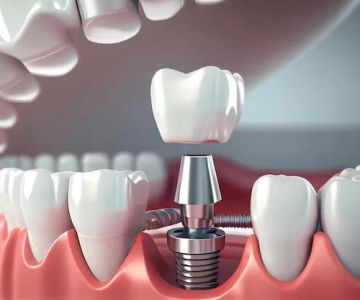Types of Dental Restorations: Comprehensive Guide to Restoring Your Smile
- Understanding Dental Restorations
- Types of Dental Restorations
- How to Choose the Right Restoration
- The Dental Restoration Process
- Benefits and Considerations of Dental Restorations
Understanding Dental Restorations
Dental restorations refer to various procedures and treatments that help restore or improve the appearance and functionality of damaged or missing teeth. Whether due to decay, trauma, or aging, dental restorations play a crucial role in maintaining your oral health. They can range from simple fillings to more advanced procedures like crowns and dental implants.
Restorative dentistry focuses on rebuilding or replacing damaged teeth, ensuring that they function properly and look natural. These restorations not only restore the shape and structure of the tooth but also help in preserving its function for chewing and speaking.
Types of Dental Restorations
There are several types of dental restorations that can be used depending on the nature of the damage, location, and personal preferences. Here’s a detailed look at the most common dental restoration options:
1. Dental Fillings
Dental fillings are one of the most common types of restorations, often used to treat cavities caused by tooth decay. They help restore the shape and function of the tooth. Fillings can be made from various materials, including:
- Amalgam (Silver Fillings) – Durable and cost-effective, but visible.
- Composite Resin Fillings – Tooth-colored and aesthetically pleasing, ideal for visible areas.
- Ceramic Fillings – Made from porcelain, highly durable, and natural-looking.
2. Crowns
Crowns, also known as caps, are placed over a damaged or decayed tooth to restore its shape, size, and strength. They encase the entire tooth, providing protection and functionality. Crowns can be made from different materials such as:
- Porcelain – Offers a natural appearance and is ideal for front teeth.
- Metal (Gold or Stainless Steel) – Strong and long-lasting but less aesthetically pleasing.
- Porcelain-Fused-to-Metal (PFM) – Combines strength and aesthetics, ideal for back teeth.
3. Bridges
A dental bridge is used to replace one or more missing teeth. It consists of artificial teeth held in place by dental crowns on the adjacent teeth. Bridges help restore the appearance of the smile and prevent the surrounding teeth from shifting. There are different types of bridges, including:
- Traditional Bridges – Made of one or more artificial teeth anchored by crowns on the neighboring teeth.
- Maryland Bridges – Held in place by a metal or porcelain framework that is bonded to the adjacent teeth.
- Implant-Supported Bridges – Supported by dental implants rather than natural teeth for better stability.
4. Dental Implants
Dental implants are considered one of the most advanced and durable types of dental restorations. They are titanium posts surgically placed into the jawbone to replace the root of a missing tooth. Once the implant integrates with the bone, a crown is placed on top. Dental implants offer several benefits:
- Long-lasting and natural-looking results.
- Improves bite and jawbone health.
- Prevents bone loss and gum recession.
5. Porcelain Veneers
Porcelain veneers are thin shells of porcelain bonded to the front surface of the teeth to improve their appearance. Veneers are used to correct various dental issues, including chipped, discolored, or misaligned teeth. They offer a highly aesthetic result and are commonly used for cosmetic improvements. The main benefits of porcelain veneers include:
- Natural appearance that mimics real teeth.
- Stain-resistant and durable.
- Minimal tooth preparation required compared to crowns.
How to Choose the Right Restoration
Choosing the best dental restoration depends on several factors, including the severity of the damage, the location of the tooth, your budget, and personal preferences. Here are some tips to guide your decision:
1. Consider the Functionality
If the restoration is for a back tooth used for chewing, durability should be a priority. Materials like gold or metal-based crowns may be better options for their strength. For front teeth, aesthetics will be more important, and materials like porcelain or composite fillings may be preferred.
2. Take Your Budget into Account
While materials like porcelain and gold offer excellent results, they tend to be more expensive. If cost is a concern, metal fillings or resin-based materials might be a more affordable option.
3. Consult with Your Dentist
Your dentist will evaluate your individual needs and recommend the best type of restoration based on your oral health and desired outcome. They can help you weigh the pros and cons of each option and guide you toward the choice that’s right for your smile.
The Dental Restoration Process
The process for getting a dental restoration depends on the type of restoration chosen. Generally, you can expect the following steps:
1. Initial Consultation
Your dentist will examine your teeth and take X-rays to assess the condition of your tooth or teeth that need restoration. They will discuss your options and explain the recommended procedure.
2. Preparation
For crowns, bridges, or fillings, your dentist will prepare the tooth by removing any decayed tissue and shaping the tooth to fit the restoration. For implants, the dentist will surgically place the titanium post into the jawbone.
3. Placement
Once your restoration is ready, your dentist will place it and make any necessary adjustments to ensure a perfect fit. In some cases, a follow-up appointment may be necessary to finalize the placement.
Benefits and Considerations of Dental Restorations
Dental restorations offer many benefits, including:
- Restoring the appearance of your smile.
- Improving the functionality of damaged or missing teeth.
- Preventing further damage or decay.
- Enhancing self-confidence and overall quality of life.
However, there are also considerations to keep in mind, such as the cost, potential discomfort during the procedure, and the need for future maintenance or replacements. It’s essential to discuss these factors with your dentist before proceeding with treatment.
If you’re considering a dental restoration, Dentistry Toothtruth offers a range of restorative options tailored to your needs. Visit our website to learn more about how we can help restore your smile.







 Maui Whitening Orlando4.0 (32 review)
Maui Whitening Orlando4.0 (32 review) Bloomington Southside Dental Care3.0 (26 review)
Bloomington Southside Dental Care3.0 (26 review) Christiana Dental Center4.0 (650 review)
Christiana Dental Center4.0 (650 review) Carolina Dental Arts - New Bern Ave4.0 (152 review)
Carolina Dental Arts - New Bern Ave4.0 (152 review) Equitas Health Short North Medical Center3.0 (96 review)
Equitas Health Short North Medical Center3.0 (96 review) Prosthodontics of Madison - Kendra Schaefer, DMD & Christine Roenitz, DMD4.0 (25 review)
Prosthodontics of Madison - Kendra Schaefer, DMD & Christine Roenitz, DMD4.0 (25 review) The Importance of Oral Health Education During Pregnancy for a Healthy Pregnancy
The Importance of Oral Health Education During Pregnancy for a Healthy Pregnancy Best Tips for Brushing Your Teeth Properly for Healthy Gums: Essential Techniques for Oral Health
Best Tips for Brushing Your Teeth Properly for Healthy Gums: Essential Techniques for Oral Health Why Skipping Dental Checkups Can Lead to Bigger Oral Health Problems
Why Skipping Dental Checkups Can Lead to Bigger Oral Health Problems Advantages of Porcelain Dental Restorations
Advantages of Porcelain Dental Restorations How Can Diabetes Cause Tooth and Gum Problems? Preventing and Managing Oral Health Issues
How Can Diabetes Cause Tooth and Gum Problems? Preventing and Managing Oral Health Issues Healthy Habits for Promoting Good Oral Health and Hygiene: Tips for a Healthy Smile
Healthy Habits for Promoting Good Oral Health and Hygiene: Tips for a Healthy Smile